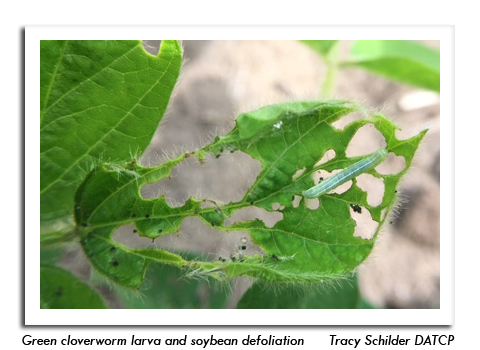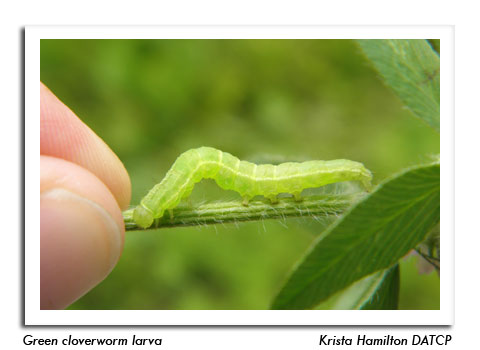
 |
|
|
Soybeans
Volume 64 Number 13 Date 07/25/2019 SOYBEAN APHID - Colonies on R1-R3 soybeans remain unusually low. The highest average count in 39 fields sampled from July 18-25 was less than 2.5 aphids per plant and 30 of the sites still had no detectable aphid population. As a reminder, aphid densities typically peak in Wisconsin during the first two weeks of August, and insecticide treatment is not warranted until populations reach 250 aphids per plant on 80% of the plants throughout the field. JAPANESE BEETLE - This pest continues to cause light to moderate defoliation (5-10%) of soybeans along field margins. Infestations were noted in 10 of the 12 counties surveyed this week, with Marathon and Portage being the exceptions. The economic threshold for Japanese beetle and other leaf feeding soybean pests decreases to 20% defoliation between bloom and pod fill. Limited spot treatment should be adequate to control beetles in fields where severe leaf feeding injury is confined to the perimeter areas. GREEN CLOVERWORM - Larvae can be found in low numbers in most soybean fields. Defoliation attributed to this caterpillar and other leaf feeding pests has not surpassed the 20% threshold for reproductive soybeans in any field surveyed this month. Green cloverworm larvae are present in Wisconsin soybeans every season, though high populations are uncommon. The last serious cloverworm outbreaks occurred in 2010. -- Krista Hamilton, DATCP Entomologist 




|
|
|